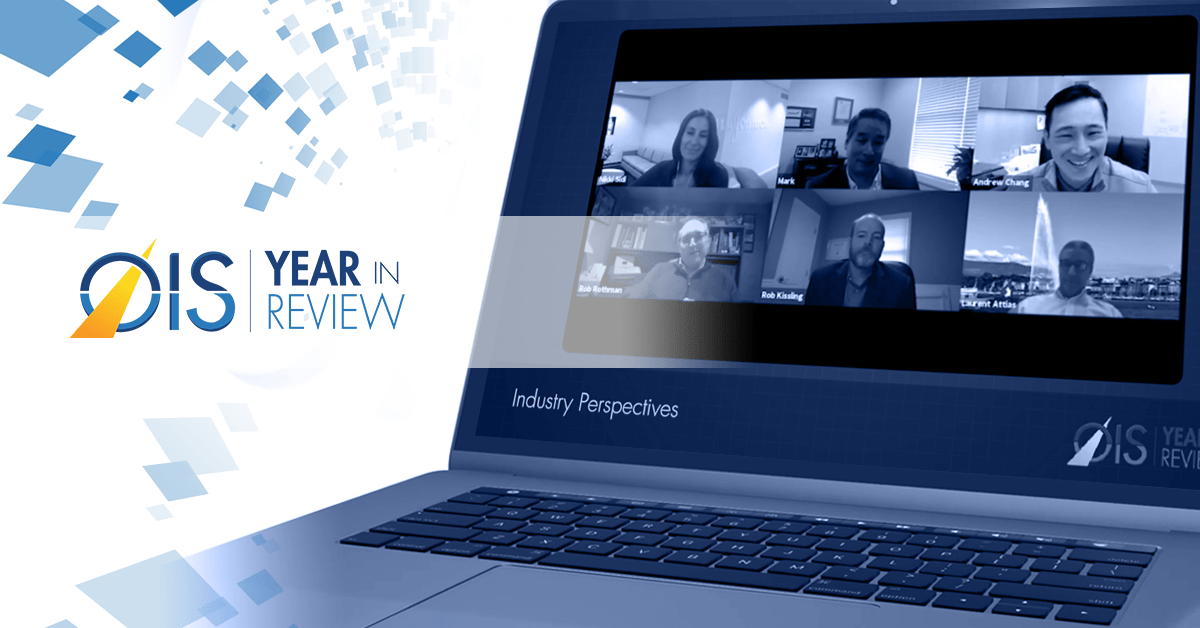Looking Ahead to 2021, Finding Value in 2020’s Lessons

Robert Kissling, VP, medical affairs for Bausch + Lomb, says forced changes can be the mother of innovation. If so, then 2020 should have sired a multitude of ideas for 2021. Among ophthalmology’s major players, these innovations include exploring new therapeutic areas and leveraging digital information platforms to improve patient outcomes and provider experiences. Here’s a look at what five key companies in ophthalmology are looking forward to in 2021.
Bausch + Lomb
Kissling notes that the pandemic forced a number of companies, B+L among them, to slow down their clinical trial activity. For B+L, that created an opportunity to focus on its pipeline. “We’ve put some investments, ranging from solid to game-changing, into the portfolio in dry eye, myopia control, and dry age-related macular degeneration, and the steady day-to-day is really going to be fulfilling that promise of what we saw in due diligence,” Kissling says.
J&J Vision
Nikki Sidi, VP, global strategic marketing, Johnson & Johnson Vision, reports the pandemic caused JJV to “double down” on some key strategic areas and to accelerate progress in others as the priority shifted to simplifying the lives of surgeons and staff and help them better serve patients. “We’re looking at innovation beyond products,” she says. “How do we bring more digitally driven initiatives and tools to help our surgeons really engage patients and bring a lot of this innovation to life?”
Patient access to treatments is the greatest unmet need in ophthalmology, she notes. “I think all of our efforts should be focused on access,” Sidi says, “and I think that’s where technology and innovation play a really key role. How do we look at some of the most innovative ways that we can get ahead of some of these diseases and get access to those that need it most?”
Sun Pharma
The pandemic has allowed companies to explore new technologies, according to Mark Hagler, SVP, head of ophthalmics, oncology and long-term care at Sun Pharma, and to analyze returns on investment of new technologies versus the traditional means of interacting with patients. “It’s a little more customer centered,” Hagler says, “so it depends on what method of interaction the customer prefers, and we are evaluating a hybrid model.”
He notes that Sun is in launch mode with its dry eye product. “We will continue to utilize the increased flexibility we now have to interact with each other,” he says. “We’ll tailor our interactions more specifically to the desires of our customers.”
Sun is focused on using new vehicle technology for drug delivery, Hagler says. A number of effective molecules are already available, but their delivery methods may not be optimal. New vehicle technology is one way to optimally deliver these molecules and potentially eliminate the need for some excipients that could be harmful to the ocular surface, he adds.
Carl Zeiss Meditec
Carl Zeiss Meditec is planning to expand significantly in all of its markets, especially in the US, says Andrew Chang, head of global sales, ophthalmic devices, and president. A Microsoft/Zeiss partnership has been announced for all of the company’s different segments, he notes.
“I think we all understand the need to make things more efficient,” Chang continues, “especially with the data that we get on a daily basis within our specialty in eye care. Patients and surgeons are more receptive now to the different types of digitalization.”
Chang says that practitioners can start by using the digital tools they have available now. “If you just combine them into your ecosystem, that can help accelerate the workflow efficiency that people care about right now,” he explains. “I can paint the picture of what that technology may look like five years down the line, which is very exciting, but I think a lot of clinicians will ask, ‘How can you help us today?’ ”
Alcon
In cataract surgery, the seamless exchange of data is critical, says Laurent Attias, SVP for corporate development at Alcon. “Whether it’s the equipment, connected in a smart way, or applications that allow the doctor to be able to have a simpler approach to planning and executing surgery, or all the diagnostics that help refine the decisions, there are great things that are happening,” Attias says.
He adds that Alcon is exploring new approaches to presbyopia and myopia, notes that retina is having a great transformation beyond anti-VEGF therapies, and points to developments in glaucoma to lighten the treatment burden or improve patient compliance.
Many of today’s therapies carry too much of a treatment burden, Attias states. There’s a balance in finding a longer-duration treatment versus not seeing a patient frequently enough to provide proper care, he adds.
These comments were presented during the Industry Perspectives session at the virtual OIS 2020 Ophthalmology Year in Review.
